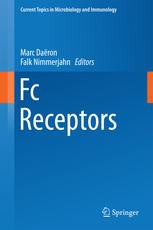

Most ebook files are in PDF format, so you can easily read them using various software such as Foxit Reader or directly on the Google Chrome browser.
Some ebook files are released by publishers in other formats such as .awz, .mobi, .epub, .fb2, etc. You may need to install specific software to read these formats on mobile/PC, such as Calibre.
Please read the tutorial at this link: https://ebookbell.com/faq
We offer FREE conversion to the popular formats you request; however, this may take some time. Therefore, right after payment, please email us, and we will try to provide the service as quickly as possible.
For some exceptional file formats or broken links (if any), please refrain from opening any disputes. Instead, email us first, and we will try to assist within a maximum of 6 hours.
EbookBell Team

4.1
20 reviewsThis volume provides a state-of-the-art update on Fc Receptors (FcRs). It is divided into five parts. Part I, Old and New FcRs, deals with the long-sought-after FcµR and the recently discovered FCRL family and TRIM21. Part II, FcR Signaling, presents a computational model of FcεRI signaling, novel calcium channels, and the lipid phosphatase SHIP1. Part III, FcR Biology, addresses major physiological functions of FcRs, their glycosylation, how they induce and regulate both adaptive immune responses and inflammation, especially in vivo, FcR humanized mice, and the multifaceted properties of FcRn. Part IV, FcRs and Disease, discusses FcR polymorphism, FcRs in rheumatoid arthritis and whether their FcRs make macaques good models for studying HIV infection. In Part V, FcRs and Therapeutic Antibodies, the roles of various FcRs, including FcγRIIB and FcαRI, in the immunotherapy of cancer and autoimmune diseases using monoclonal antibodies and IVIg are highlighted. All 18 chapters were written by respected experts in their fields, offering an invaluable reference source for scientists and clinicians interested in FcRs and how to better master antibodies for therapeutic purposes.